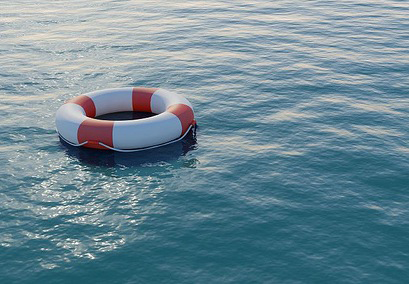PFD’s AND PSD’s If YOU are one… you should wear one!
Here are some basic facts about PSD”s that you can WOW your fellow TEAM members with.
Did you know that there are five different categories of PFD’s currently recognized and in use?
USCG and State Law Enforcement agencies require and/or recommend different.
Types of PFD’s for different applications. Make sure you are aware of the requirements for your state before you select your PFD.
Most adults need an extra 7 to 12 pounds of buoyancy to keep their head above water. Below is a list of minimum buoyancy for each type of PFD.
Type I – 22 lbs.
Type II – 15.5 lbs.
Type III -15.5 lbs.
Ring Buoy – 16.5 lbs.
Boat Cushion – 18 lbs.
Hybrid inflatable – 22/7.5 lbs.
Special use device – 15.5 to 22 lbs.
Type I – Offshore Lifejacket
This PFD is designed for extended survival in rough, open water. It usually will turn an unconscious person face up and has over 22 pounds of buoyancy. This is the best PFD to keep you afloat in remote regions where rescue may be slow in coming.
Type II – Near Shore Buoyant Vest
This “classic” PFD comes in several sizes for adults and children and is for calm inland water where there is chance of fast rescue. It is less bulky and less expensive than a Type I, and many will turn an unconscious person face-up in the water.
Type III – Flotation Aid
These life jackets are generally considered the most comfortable, with styles for different boating activities and sports. They are for use in calm water where there is good chance of fast rescue since they will generally not turn an unconscious person face-up. Flotation aids come in many sizes and styles.
Type IV – Throwable Device
These are designed to be thrown to a person in the water. Throwable devices include boat cushions, ring buoys, and horseshoe buoys. They are not designed to be worn and must be supplemented by wearable PFD. It is important to keep these devices immediately available for emergencies, and they should not be used for small children, non-swimmers, or unconscious people.
Type V – Special Use Device
Special use PFDs include work vests, deck suits, and hybrids for restricted use. Hybrid vests contain some internal buoyancy and are inflatable to provide additional flotation.
Inflatable Life Jackets
Inflatable life jackets rely on inflatable chambers that provide buoyancy when inflated. Uninflated, inflatable life jackets are less bulky than inherently buoyant life jackets. Inflatables come in a variety of U.S. Coast Guard-defined performance types. The specific type of life jacket is determined by characteristics such as its amount of buoyancy, its in-water performance and its type of inflation mechanism. To understand the details of a life jacket, read the life jacket label and owners manual, and consult your dealer or retailer if necessary.
All inflatables contain a backup oral inflation tube (which also serves as the deflation tube).
The preceding information is compliments of:
Personal Flotation Device Manufacturers Association
231 S. LaSalle Street, Suite 2050
Chicago, IL 60604
https://www.pfdma.org/choosing/types.aspx
As a TEAM Member we are mostly exposed to 2 types of PSD’s Inflatable Life Jackets that come in two styles or variations (as shown above in a Horse Collar / Horse Shoe and Fanny Pack). In addition to selecting the right PSD for the job the next item to address is the inflation type: manual/oral, requiring good old fashion lung power, or CO2 Cartridge with manual fire (pull string) or water activation?
In addition to the above as Team Member we are most likely also exposed to Throwable Devices. Not pictured is the favorite of many Teams, the “Rope a Dope,” consisting of a rope in a bag that can be easily thrown (usually under hand) while retaining an end to a conscious victim in the water.
Regardless of what type of PFD your TEAM has elected to outfit you with most important of all …be proficient with it! Train regularly, and follow ALL the manufacturer’s instructions and closely and carefully inspect it for sign of wear and tear that are signs of needed replacement.
Chances are that in your personal vehicle you carry some “special tools” that are just part of your trade, make one of those a PFD. Be SAFE out there!


Dodaj komentarz
Chcesz się przyłączyć do dyskusji?Pomóż nam się rozwijać!